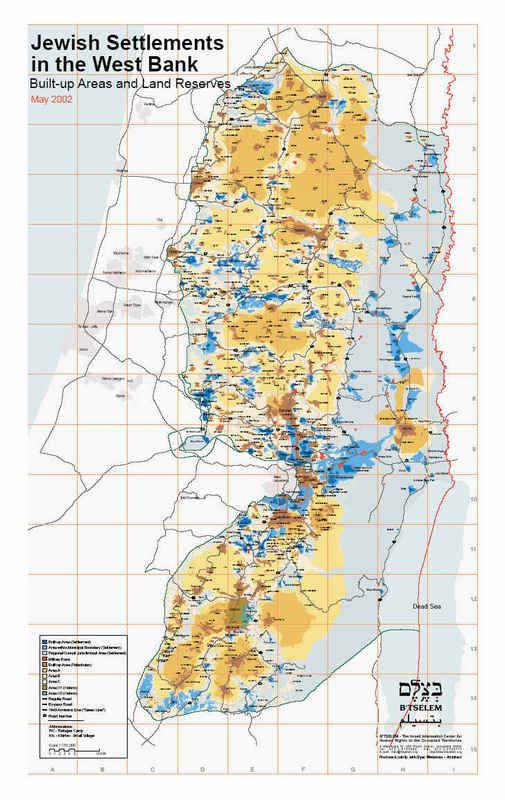When people speak of “Israeli settlements” in Palestine’s West Bank, for the average American, an image of pioneers might immediately surface, settlers arriving in wagons and building homes and small communities on the western frontier, possibly in the Dakotas or on the plains of Oklahoma in the 19th century. If this image of a settlement seems off base, look up the term, settlement, in the dictionary:
A colony, a body of people who settle far from home, but maintain ties with their homeland; a village: a community of people smaller than a town; a colonization: the act of colonizing; the establishment of colonies; like the “the British colonization of America;” or an area where a group of families live together.
If any of these definitions of settlement were ever applicable to the typical Israeli settlement in the West Bank, there would hardly be any difficulties in attaining something close to a permanent peace between Israel and Palestinians, a real two state resolution of the conflict. The removal of these settlements would likely be inconsequential.
The problem here is that the term, “Israeli settlement,” is a thoroughly misleading one, a deceiving understatement for what it is that actually confronts the peace process. By the above definition, none of the more than 150 “Israeli settlements” in the West Bank is a settlement by any definition of the term. The typical Israeli settlement in the West Bank is instead a village, town, or small city and they are scattered throughout this small piece of Palestinian real estate.
Although the populations of Israelis living in these West Bank settlements listed in Wikipedia are outdated, thirty-five of them exceed 1000 persons with the largest listed as Ma’ale Adummim with a current (2006) population of 31,400, then Betar ‘Illit with 28,400, and Modi’in Illit with 33,200. Fortunately, these small cities lie near the 1967 border, now protected by the Wall, although Ma’ale Adummim, adjacent to Jerusalem, juts deep into the West Bank almost cutting it in half. The others are spread throughout the West Bank as shown by this map. The blue areas show the larger settlements. The roads interconnecting them with Israeli are also visible.
To obtain a better idea of what an Israeli settlement is, I invite you to watch a documentary called, The Iron Wall, accessed below where the problem caused by their presence becomes evident. It is these “settlements” that is presently a major obstacle to peace, was the major un-removable obstacle in 2000 during the Camp David/Taba negotiations, and is probably the principle reason why Israel rebuffed later peace plans and offers from the Arab League (2002, 2006) and Iran (2003) among others, and has permitted the Road Map to die a slow death. Aside of the other unsettled issues like the right of return and East Jerusalem, a Palestinian state cannot exist as a sovereign entity in the midst of alien villages, towns, and cities, all interconnected with Israel by a network of Israeli-only roads and highways, which wind through the West Bank.
The The Iron Wall begins by telling us about the colonization of the West Bank, which has gone on under the protection of a military occupation for the past 40 years, and that this development was envisioned by the Zionist movement long before the state of Israel was born. The settlement movement is a distinctly right wing movement supported all along by left and right, including the Labor party. Only recently, in 2005, has a major voice come forth to recognize the injustices that are being perpetrated on behalf of the Israeli people, Ehud Barak’s voice, who now appreciates that without the removal of settlements, Israel will forever remain a pariah state, as it attempts to extinguish the yearnings of the Palestinian people for freedom and self-determination.
In 1923, Vladimir Jabotinsky, leading intellectual of the Zionist movement and father of the right wing of that movement, wrote:
“Zionist colonization must either stop, or else proceed regardless of the native population. Which means that it can proceed and develop only under the protection of a power that is independent of the native population – behind an The Iron Wall, which the native population cannot breach.” First published in Russian under the title O Zheleznoi Stene in Rassvyet, 4 November 1923.
From that day these words became the official and unspoken policy of the Zionist movement and later the state of Israel. Settlements were used from the beginning to create a Zionist foothold in Palestine.
The Iron Wall documentary exposes this phenomenon and follows the timeline, size, population of the settlements, and its impact on the peace process. This film also touches on the latest project to make the settlements a permanent fact on the ground; the wall that Israel is building in the West Bank and its impact on the Palestinian people.
Click here for a full education of what the word “settlement” means as it applies to the Israeli-Palestinian conflict, or bookmark it for later viewing. It has been on YouTube since Sep 15, 2006. Its length is 57 min 19 sec. You will be so much the wiser about the obstacles to resolving this conflict if you do.





